Why Xiaomi Mi Mix is the best smartphone on the market. The main camera of a mobile device is usually located on the back of the body and is used for taking photos and videos. ⇡ Design, ergonomics and software
Review of an almost frameless giant without a speaker
08.06.2017
Basic Xiaomi specifications Mi Mix
| Screen | S-IPS, 6.4", 1080x2040, multi-touch 10 touches |
| Iron | 2.35 GHz, Qualcomm MSM8996 Snapdragon 821, 64 bit, 4 Kryo cores, Adreno 530 |
| Memory | RAM 6 GB, ROM 256 GB, no Micro-SD |
| Mobile Internet | LTE cat.12 600/100 Mbit/s HSDPA, HSUPA, TD-SCDMA EDGE |
| Mobile networks | LTE Bands 1-5,7,8,38-41 UMTS 850, 900, 1900, 2100 GSM 850, 900, 1800, 1900 CDMA 800 TD-SCDMA |
| Battery | Li-Ion, 4400 mAh, fast charging Quick charge 3.0 |
| Dimensions | 158.8 x 81.9 x 7.9 mm |
| Weight | 209 g |
| Camera | 16 MP, flash, autofocus, f/2.0, PDAF, 4K video, Auto HDR front: 5 MP, f/2.2, 76° |
| Navigation | GPS, GLONASS, BeiDou |
| OS | Android 6.0 Marshmallow, MIUI 8 |
| SIM | 2 x Nano-SIM |
| Price | RUB 39,990 |
A smartphone of the "wow" category. Huge, powerful, expensive, unusual. The screen is 6.4" in size - it’s almost a tablet. But there are “no frames” around the screen - a frame on only one side, so the dimensions are not quite tablet-like.
Top-end hardware, a sea of memory. Everything is great with the battery. "Ceramic body", whatever that means.
Alas, we couldn’t help but be clever. Firstly, the camera. If in all other respects, including price, Mi Mix claims to be a flagship, then the camera confidently brings it down to earth. Secondly, the earpiece. More precisely, its actual absence. Thirdly, by and large, it is not so frameless.
Price
Xiaomi Mi Mix comes in two varieties.
The younger one, with a “modest” 128 GB of flash memory, is not officially imported into our country. “Gray” devices can be found on sale at prices starting from 28 thousand rubles.
The older model can be bought in the official store for 39,990 rubles. It is not visible for sale in serious networks. “Gray” devices can be found on sale somewhere in the thousands starting from 34x. Those. The price difference compared to the official store is only 15%.
Equipment
Charger (black). Lace USB Type-C(white). A nail clip for removing the SIM card tray. And - attention! - Leather Case!
A test device arrived to me, which has already passed through a number of testers. And the case, to put it mildly, looks battered by life. I put it on Mi Mix and was horrified. Oh yes, non-slip and practical. But the view - excuse me...
Appearance
| Weight | 209 g |
| Size | 158.8 x 81.9 x 7.9 mm |
| Protection | No |
The main feature of Mi Mix is, of course, the screen. It is clear that the screen of any modern smartphone occupies most of the front surface. Immediately he occupies almost all of it...
On three sides the thickness of the frames is somewhere around 2.5 mm. Bottom - about 13 mm. In the official pictures it seems that there are almost no frames at all. But this is a slight artistic exaggeration, for which Xiaomi has already received a lot of criticism from journalists and observers. In reality, the frames are not so small, but due to big size On the screen they really look very thin, so visually everything is in order, there is a frameless effect.
However, the unusualness is achieved not even due to the thinness of the frames, but due to the almost complete absence of the top frame. All smartphones are designed similarly. The frames are thinner on the sides, thicker at the top and bottom. And on the upper and lower frames everything is placed. Sometimes not posted. Sometimes the bottom frame is left empty. But smartphones have historically had it - for symmetry, plus to make it more convenient to hold, and in general it just happened that way.
Xiaomi decided to remove one of the upper and lower frames. And they removed the top one. On which the earpiece is traditionally placed, front-camera and light-proximity sensors. And where, one wonders, did they put them?
The front camera and light sensor were placed on the only wide frame, on the bottom. The camera was shoved into a corner, the sensor lives in the center. There, in the center, there is also an LED.
Proximity sensor. They changed the technology. Instead of infrared it became ultrasonic. Ultrasonic sensors can work through the screen. Yes it works. But it doesn't feel as confident as traditional sensors. Located in the expected place, at the top edge in the center.
The strangest thing is, of course, the earpiece, which is not there. Quote from the official website: "Piezoceramic acoustics. During a conversation electrical signal is converted into mechanical energy, causing a resonance in the metal frame of the smartphone, which generates sound waves that go directly to the ear."
Speaking in Russian, Mi Mix sounds everything. It can be applied to the ear with both the screen and the back. The effect is the same.
The interlocutors can be heard more or less normally. But you either have to turn up the volume, or the interlocutor’s voice will not be very pleasant. Something else is worse. In essence, it turned out to be a quiet speakerphone. When you cover the ordinary speaker of an ordinary smartphone with your ear, the entire voice of the interlocutor goes straight into your head, and those around you cannot hear anything. Immediately the voice comes in all directions. And from a distance of a meter and a half, everyone will hear your interlocutor perfectly.
We need to understand the following. Both ceramic acoustics and ultrasonic sensors are completely working technologies. But inferior to traditional ones. And they were used in Mi Mix not because these technologies are fashionable and cool, but because they need to somehow get out of the situation that Xiaomi got themselves into by abandoning the top frame. Although, honestly, it would be better if they simply moved the speaker to the rear surface. There's definitely enough space there.
Stop whining. Mi Mix looks, of course, just wow. Refined black color, gold rims around the camera and finger sensor. Attracts attention and inspires respect. It's hard, really. Doesn't fit into pockets. The gloss collects fingerprints. And it's also slippery. I don't think I wanted to whine? Oh.
By the way, they say the gold of the rims is real. 18 carat. No, this does not mean that there is 18 carat gold (i.e. 3.6 grams). This only means that the material of the rim is 75% gold.
The case, of course, is non-separable. The build is naturally excellent.
Case material - "ceramics". No, not clay, there are a lot of different ceramics now. According to tactile sensations, glass is glass. But it sounds like it! Ceramic smartphone! That's what's nice - the material seems to be very strong, in the sense of not being scratchy. I'm not sure about shockproofness. I was afraid to check.
Boring details about appearance
Rear Camera, flash, fingerprint sensor. The sensor and camera are made the same size and are located close to each other. However, it is not too difficult not to miss. You just need to feel the sensor by moving your finger from approximately the middle of the backrest upwards.
Top. 3.5 mm audio output and two holes from two microphones.
Bottom. USB Type-C output. The speaker is one thing. The second grille is fake. Well, or there’s a third microphone hidden behind it.
The buttons are sent to the right side.
SIM card tray (Nano-SIM) - on the left.
Internals (iron)
| AnTuTu | 115895 (v6.2.7) |
| AnTuTu | 67395 (v5.7.1) |
| Chipset | Qualcomm Snapdragon 821 |
| Cores | 2 x Kryo 2.35 GHz 2 x Kryo 2.20 GHz |
| GPU | Adreno 530 |
| RAM | 6 GB |
| ROM | 256 GB |
| Micro-SD | No |
Apart from a couple of platitudes, there is nothing to say. Powerful processor and a lot of memory. Both operational and flash. All.
There are many sensors. Barometer, accelerometer, compass, gyroscope. I have already mentioned light and proximity sensors.
The fingerprint sensor also did not disappoint, it is clear and competent. Although it is not always possible to get into it quickly.
Communication with the outside world
For complete happiness, the only thing missing is LTE Band 20. Otherwise, everything is fine.
Screen
The screen is great, but there are still a couple of questions about it.
Firstly, why was it necessary to set such a weak minimum brightness? However, this is a small thing. The second point is more interesting.
Random clicks. In portrait orientation everything is fine. But in the landscape they happened quite regularly. In toys. Naturally, on the side where the frame is narrow.
Well, you should pay attention to the screen resolution. It's a little non-standard.
Otherwise, I repeat, everything is fine with the screen. Bright, beautiful, with excellent oleophobic coating.
Operating system and other software
Everything is fine. Russified, stable, etc. No problem. Facebook was pre-installed, but removed without problems.
I liked the ability to swipe to remove on-screen buttons at any time. Comfortable. Here they are, and now they are gone.
I didn’t like how these same on-screen buttons were drawn right on top of the picture. If you try to get out of the toy, try to hit the "Back" button, which is not visible. Do you see it in this screenshot?
Battery
Battery capacity - 4400 mAh. The battery test results are excellent - 183% of my standard standard. It is possible to get away in a day only purely theoretically. I was especially pleased that there was no particular failure in GPS tests. Usually they become the weak link.
Xiaomi Mi Mix as a flashlight
The flashlight turned out to be quite decent. 8 lux from a distance of 180 centimeters is a good result.
Today we focus on Xiaomi Mi Mix – perhaps the most unusual smartphone of this year, worthy of a separate review, a kind of “serial concept”.
UPD. from November 1. Right now you can order an exclusive Xiaomi Mi Mix with delivery anywhere in the world. Keep in mind that this smartphone will not be officially shipped to Russia, Europe, or the USA.
Best prices for new Xiaomi smartphones
| Xiaomi Mi6 | Snapdragon 835, 6 Gb RAM, 64 Gb Flash, 2 x 12 MP camera | $789.99 $586.92 | Buy |
|---|---|---|---|
| Xiaomi Mi5s | Snapdragon 821, 3 Gb RAM, 64 Gb Flash, 12 MP camera | $499.99 $355.64 | Buy |
| Xiaomi Mi5 | Snapdragon 820, 3 Gb RAM, 64 Gb Flash, 12 MP camera | $379.99 $228.99 | Buy |
| Xiaomi Redmi 4 | Snapdragon 430, 2 Gb RAM, 16 Gb Flash, 12 MP camera | $129.99 $115.99 | Buy |
| Xiaomi Redmi Note 3 Pro | Snapdragon 650, 3 Gb RAM, 32 Gb Flash, 16 MP camera | $229.99 $197.89 | Buy |
The fact is that this innovative gadget was initially planned, apparently, solely as a prototype “for the future,” but in the end the manufacturer decided to release it as an exclusive model.
In principle, this approach to creating Xiaomi Mi Mix is far from unique. For example, a couple of years ago Samsung presented a conceptual Galaxy Note Edge with a curved side edge, which was also released in limited edition.
The first photos of Mi Mix hit the network a couple of weeks before the presentation, and were mistaken by some analysts and journalists for photos of Xiaomi Mi Note 2. The reason for such misconceptions was partly the absence of any new forms on the smartphone market for several years.
The consumer is frankly “starved” for something truly like this, while manufacturers are churning out almost exclusively classic monoblocks “in a thin metal case.”
A short video presentation of Xiaomi Mi Mix
https://youtu.be/uiutj90dqAU
Innovative design
The main feature of the unusual new product is its almost frameless design: the smartphone screen is frameless not only on the sides, but also on the top. We already saw something similar in 2014 with the example of Sharp Aquos Crystal, but the creators of Xiaomi Mi Mix went further.
For example, they managed to equip this device, with the dimensions of a regular smartpad, with a huge screen with a diagonal of 6.4 inches and an unusual resolution of 1080 x 2040 pixels (slightly more than FullHD).
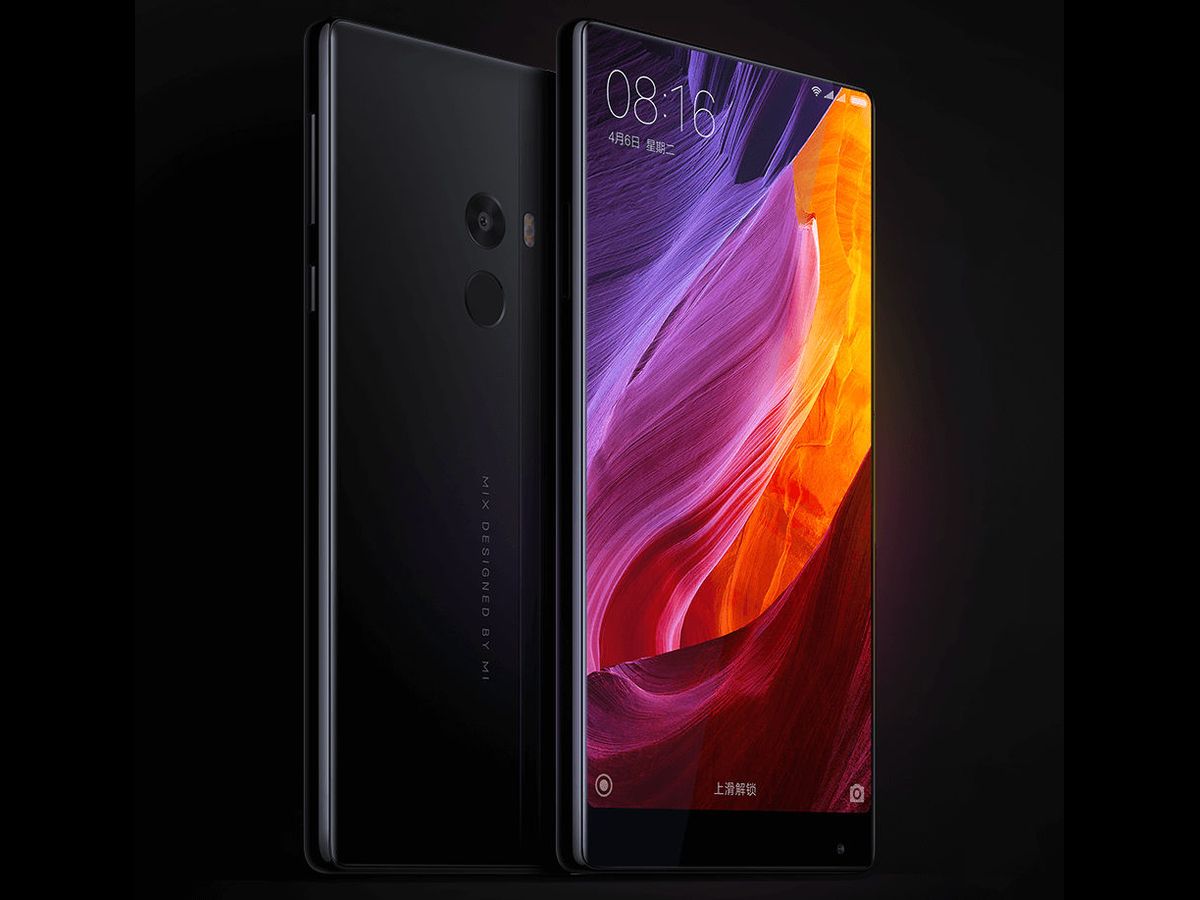
The Mi Mix display (IPS LCD) fills as much as 91.3% of the front surface of the smartphone, which is a record value at the present time.
This design required innovative technological solutions. Thus, Xiaomi Mi Mix lacks a classic front-facing speaker, and sound transmission during a conversation is carried out through bone conduction technology (to the inner ear using the bones of the skull).
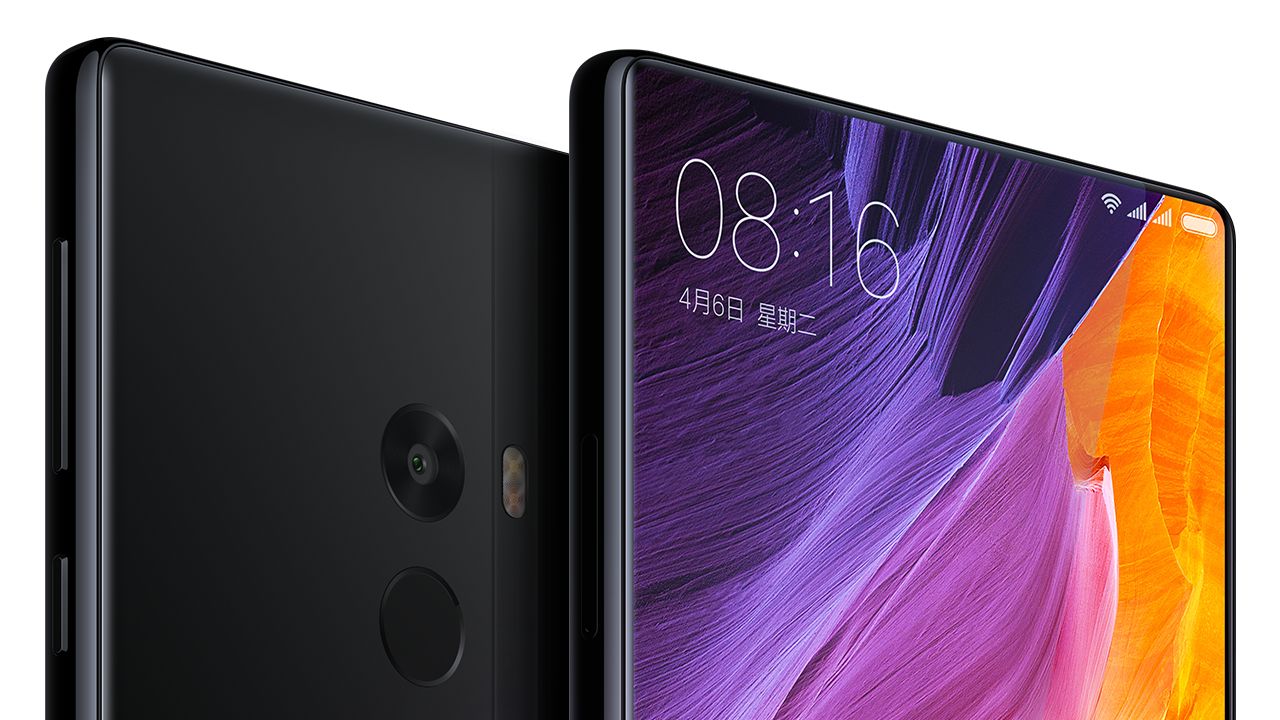
The front camera has moved to a thin frame below the screen, and the device has also lost hardware control buttons, including “Home”, which has not previously been seen in Xiaomi smartphones.
The fingerprint scanner of the Mi Mix is located on the back cover under the camera. The only mechanical elements present are volume and power control buttons.
The piquant feature of Xiaomi Mi Mix is the completely ceramic body, and not only back cover, like the Mi 5 released this spring. It is not yet clear what strength indicators this design has, but if successful, we can count on a new trend.
The technology for producing ceramic cases has not yet been sufficiently developed, so company representatives promise to produce no more than 10,000 handsets per month.
According to Xiaomi representatives, the new Mi Mix will be available exclusively in black.
Interestingly, the already exclusive Xiaomi Mi Mix will have a special “jewelry” version with frames around the screen covered in 18-karat gold. Moreover, this is not third-party customization, but “native”.
Technical specifications of Xiaomi Mi Mix
In terms of hardware, Mi Mix is a real uncompromising flagship smartphone, based on the top-end Qualcomm Snapdragon 821 chipset.
The amount of RAM, depending on the version, is 4/6 Gb, and the internal flash drive is 128/256 Gb. However, there was a “fly in the ointment” – the new product does not have a MicroSD slot.
But there is a tray for two nano-SIM format SIM cards, a 16 MP main camera with phase detection autofocus and optical image stabilization, a 5 MP front camera, 24-bit/192 kHz audio stream playback, and a modern interface. USB Type-C and a very solid 4400 mAh battery with the function fast charging Quick Charge 3.0.
Also worth noting NFC support and proprietary contactless payment technology Xiaomi Mi Pay. The latter, however, is currently only available in China and is not relevant outside of it.
Xiaomi Mi Mix runs on the most modern mobile OS Android 7.0 Nougat with an adapted version of the original MIUI shell.
Cost of Xiaomi Mi Mix
Now it’s worth talking about the price of the “issue”. The exclusive smartphone will be produced in two versions: 4 Gb RAM + 128 Gb Flash and 6 Gb RAM + 256 Gb Flash.
The price of the first, according to Xiaomi representatives, will be 3,499 yuan (about 515 US dollars) in the domestic Chinese market, the price of the second will be 3,999 yuan or ~$590. Not very much for such a unique innovative device.
So everything indicates that Xiaomi Mi Mix will be a truly scarce product, for which there will literally be queues, and intermediaries will charge a hefty markup.
Where and how to buy a new “mix”?
Acceptance of applications for pre-order of Xiaomi Mi Mix starts on November 4. It is expected that initially the smartphone will be sold only in the Middle Kingdom, but everyone will be able to purchase it on Chinese trading platforms like AliExpress.
However, it is worth considering that we are talking about an exclusive model that will be released in limited edition, so there may not be enough smartphones for everyone.
The smartphone looks like a concept, like a device of the future that you can buy right now. The main merit for this belongs to the screen with minimal frames, which occupies almost the entire front part of the body. This was made possible thanks to amazing technology, but is such a smartphone convenient for everyday use? Let's try to answer this question.
Externally, Mi Mix is different from all the others. Other devices can be attractive, but this one evokes special feelings. As already mentioned, it's all about the screen. It uses a 6.4-inch IPS LCD panel with an unusual 17:9 aspect ratio, taking up more than 90% of the front of the case. For comparison, the screen occupies 76%. The edges of the screen smoothly curve into the body.
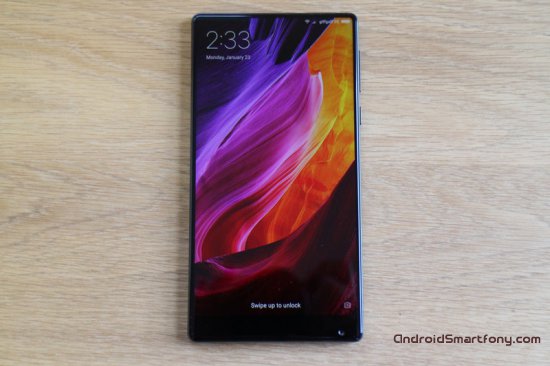

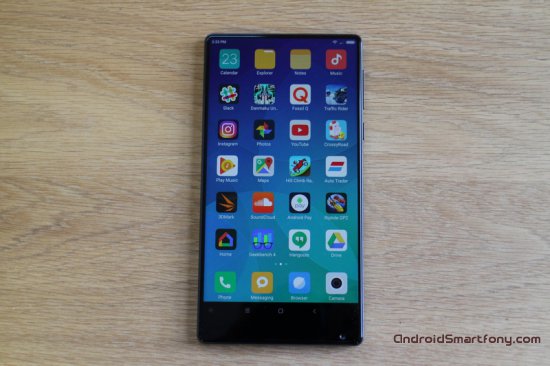
Otherwise, Mi Mix has a very simple shape. Its minimalism doesn't catch your eye until you carefully study the nuances, from the "Mix designed by Mi" inscription on the back to the complete absence of sensors and speakers at the front. The speaker is located behind the screen and uses special isoelectric technology to transmit sound. Xiaomi did not use a conventional distance sensor, using an ultrasonic module behind the screen. The smartphone not only looks good, but is also an impressive technical achievement.
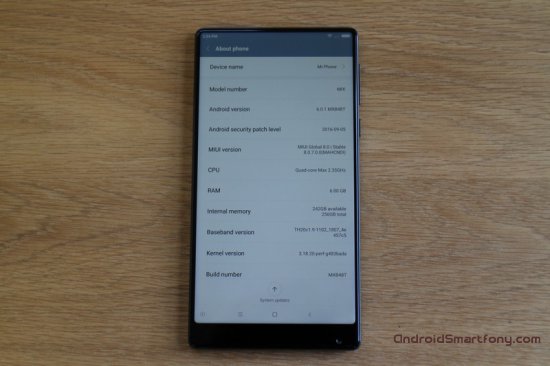
![]()
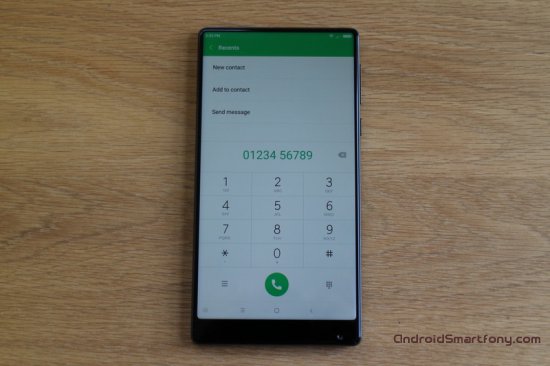
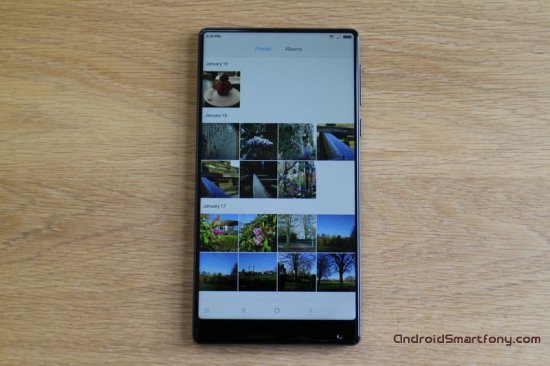
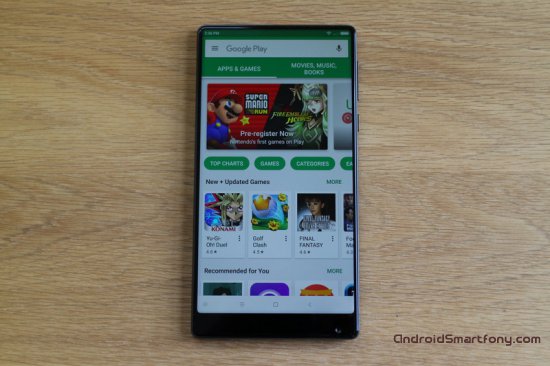
The build quality of the case is at the highest level. It is made of ceramic rather than metal and glass. The specimen in question was black; there is also a white version of the smartphone. The beauty is spoiled by the numerous fingerprints that remain on the case, so it is advisable to carry a handkerchief with you to wipe it.
![]()
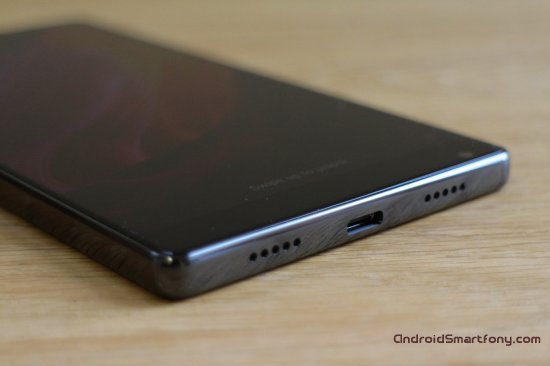
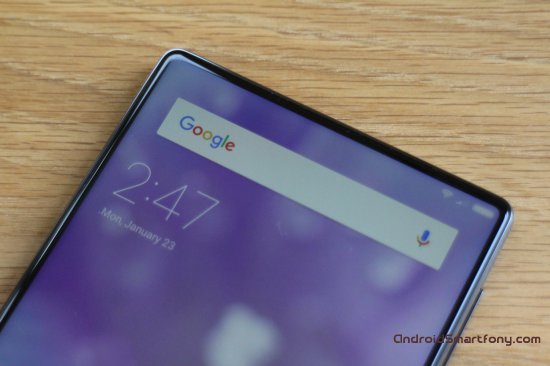
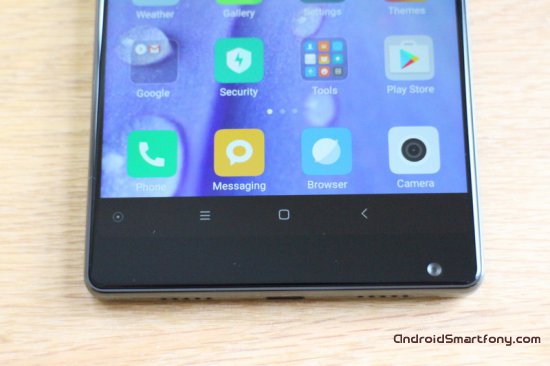

Fingerprints aren't the only problem. Xiaomi Mi Mix is very slippery, as if it is constantly trying to escape from the user’s hands. No matter how you try to hold it, it twists, slips out and rushes to freedom. The ceramic body offers no friction and there are no raised patterns on it. No matter what you do, take photos or check email, the smartphone slips out. For this reason, it is extremely important to place it in a case, otherwise your expensive device may very soon end up broken.

![]()
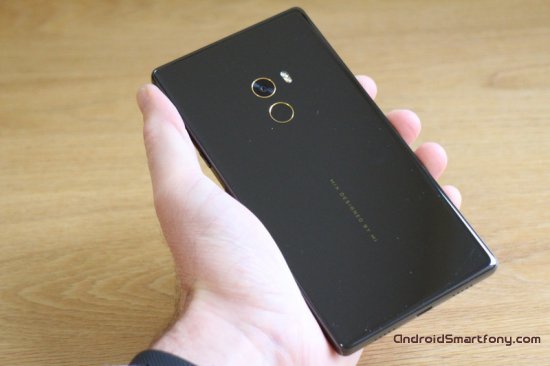



Performance of Xiaomi Mi Mix
The variant of the smartphone in question has 6 GB of RAM and a Snapdragon 821 processor, there is also a cheaper version with 4 GB of memory, without the gold around the camera and fingerprint scanner.Snapdragon 821 is a fast processor that has proven itself in smartphones like and. Here it performs just as well, allowing the operating system and applications to run quickly and smoothly, just like games. Games look especially good on this big, beautiful screen.

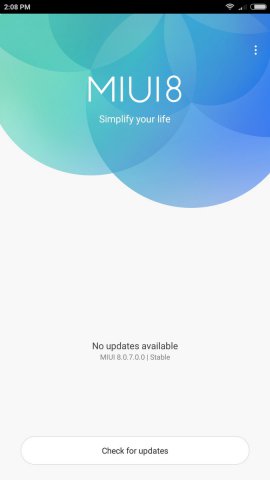



The developers chose an IPS LCD panel with a resolution of 1920 x 1080 pixels. This allows you to not consume battery power very quickly and is good for watching videos. By launching YouTube and expanding the video to full screen, you will fill it entirely, including the curved needles.
In the AnTuTu 3D benchmark, the smartphone scored 153,637 points, managing to enter the top five. The battery capacity here is 4400 mAh, which is a lot modern standards. As a result, with typical usage, the charge lasts for two days.
Unfortunately, Xiaomi Mi Mix is released on the operating system. The reason for the absence of the latter Android versions Nougat can be considered a user interface Xiaomi MIUI. It makes big changes to Android - so big that it doesn't even work payment system Android Pay.
MIUI 8 version installed, app store available Google Play. This means you don't have to contact own store Xiaomi and everything you need can be installed from a familiar source. Initial setup takes certain time, but no problems arise.
The device has a number of pre-installed Xiaomi tools, including a QR code scanner, compass, voice recorder, contacts, mail, music, File Explorer and calendar. Xiaomi has installed its own dialer, messenger and browser. Those familiar with Nexus and Pixel smartphones will notice differences in the notification panel and settings menu; in addition, the icons of all applications are located on home screen, not in the application list.
Xiaomi has come up with some quality apps. Standard browser It works quickly, the weather forecast app provides detailed information, and the calendar is easy to use. If you don't like the modest appearance of the icons in the MIUI interface, there are many graphic themes available for installation. Settings allow you to change the appearance and functionality of the shell.
Many would prefer to run a pure version of Android, but MIUI is also easy to use and nice to look at. We'll have to put up with this shell from China, where Google services prohibited, it is nicer than shells from many Chinese manufacturers.
You may not be worried about safety latest version Android, so I want to believe that the smartphone will be updated to Android 7. Unfortunately, Xiaomi's update history is not the best, so this smartphone is not for those who want to receive monthly security updates.
Middle chamber
The rear camera resolution is 16 megapixels, the front one is 5 megapixels. The latter is located not above the screen, but below it. This is what we will talk about first.Due to the screen size, the developers had to use a compact camera module. Its location is not the best, because if you are not used to it, you can miss your face when taking a selfie. To avoid trouble, when switching to the front camera, the smartphone tells you to rotate the device so that the camera is in its usual position, and the position of the camera application changes accordingly.
It's good when used Xiaomi cameras, but not if you work with Instagram, Snapchat and other photo applications. Then the camera may be blocked by your hand or the photos may come out at strange angles. If you turn your smartphone over, the app will not turn over with it, so you will see the wrong picture and it will become difficult to press the shutter button. The volume button can activate the shutter, but not in every app. Photo quality on the front camera is average, although there are interesting filters and a beautification mode. Smart settings can significantly improve your photos.
The rear camera is based on a Sony IMX318 sensor with f/2.0 aperture and phase detection autofocus. There is no optical stabilization images, but there is an electronic one. Recently, many smartphones have been released with dual cameras, but even here you get good photos.
The camera makes aggressive use of the HDR mode, enhancing shadows and blue skies that some users would prefer not to use.
The camera effectively blurs the background image, creating a stunning bokeh effect without the need for a second camera. The same filters are available here as for the front camera, plus panoramic mode and manual shooting mode. As a result, the camera cannot be called the best, but it is not bad either.








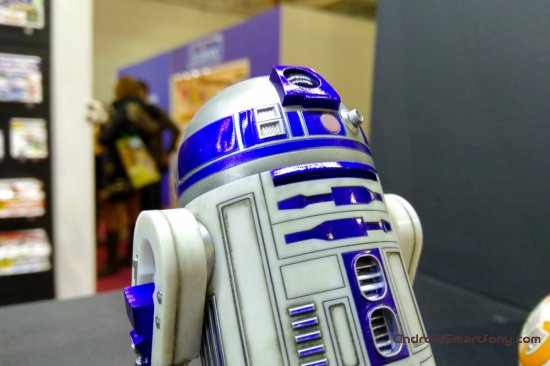



Calls and communication
Xiaomi uses piezoelectric technology behind the screen and the sound is transmitted through it. The effect is unusual, but there are no problems with quality or volume.The sound system works even better than traditional speakers. It doesn't matter whether you hold the smartphone to your ear or not, any part of the screen produces the same volume and clarity.
The ultrasonic distance sensor does not work as successfully. Sometimes it turns off the screen when the smartphone is in front of the user's face, sometimes it accidentally activates applications. The screen does not darken when you cover it with your hand.
You have to pay for advanced technology, and this smartphone costs over $1,000 in the US. The reason is that it is produced in limited quantities.
The competitors of this device can be called
Information about the make, model, and alternative names of the specific device, if available.
Design
Information about the dimensions and weight of the device, presented in different units of measurement. Materials used, colors offered, certificates.
| Width Width information - refers to the horizontal side of the device in its standard orientation during use. | 81.9 mm (millimeters) 8.19 cm (centimeters) 0.27 ft (feet) 3.22 in (inches) |
| Height Height information - refers to the vertical side of the device in its standard orientation during use. | 158.8 mm (millimeters) 15.88 cm (centimeters) 0.52 ft (feet) 6.25 in (inches) |
| Thickness Information about the thickness of the device in different units measurements. | 7.9 mm (millimeters) 0.79 cm (centimeters) 0.03 ft (feet) 0.31 in (inches) |
| Weight Information about the weight of the device in different units of measurement. | 209 g (grams) 0.46 lbs 7.37 oz (ounces) |
| Volume The approximate volume of the device, calculated based on the dimensions provided by the manufacturer. Refers to devices with the shape of a rectangular parallelepiped. | 102.75 cm³ (cubic centimeters) 6.24 in³ (cubic inches) |
| Colors Information about the colors in which this device is offered for sale. | Black White |
| Materials for making the case Materials used to make the device body. | Ceramics |
SIM card
The SIM card is used in mobile devices to store data that certifies the authenticity of mobile service subscribers.
Mobile networks
A mobile network is a radio system that allows multiple mobile devices to communicate with each other.
| GSM GSM (Global System for Mobile Communications) is designed to replace the analogue mobile network (1G). For this reason, GSM is often called a 2G mobile network. It is improved by the addition of GPRS (General Packet Radio Services), and later EDGE (Enhanced Data rates for GSM Evolution) technologies. | GSM 850 MHz GSM 900 MHz GSM 1800 MHz GSM 1900 MHz |
| CDMA CDMA (Code-Division Multiple Access) is a channel access method used in communications in mobile networks. Compared to other 2G and 2.5G standards like GSM and TDMA, it provides more high speeds data transfer and connectivity more consumers at the same time. | CDMA 800 MHz |
| TD-SCDMA TD-SCDMA (Time Division Synchronous Code Division Multiple Access) is a 3G mobile network standard. It is also called UTRA/UMTS-TDD LCR. It was developed as an alternative to the W-CDMA standard in China by the Chinese Academy of Telecommunications Technology, Datang Telecom and Siemens. TD-SCDMA combines TDMA and CDMA. | TD-SCDMA 1880-1920 MHz TD-SCDMA 2010-2025 MHz |
| UMTS UMTS is an abbreviation for Universal Mobile Telecommunications System. It is based on the GSM standard and belongs to 3G mobile networks. Developed by 3GPP and its biggest advantage is providing greater speed and spectral efficiency thanks to W-CDMA technology. | UMTS 850 MHz UMTS 900 MHz UMTS 1900 MHz UMTS 2100 MHz |
| LTE LTE (Long Term Evolution) is defined as a technology fourth generation(4G). It is developed by 3GPP based on GSM/EDGE and UMTS/HSPA to increase the capacity and speed of wireless mobile networks. The subsequent technology development is called LTE Advanced. | LTE 850 MHz LTE 900 MHz LTE 1700/2100 MHz LTE 1800 MHz LTE 1900 MHz LTE 2100 MHz LTE 2600 MHz LTE-TDD 1900 MHz (B39) LTE-TDD 2300 MHz (B40) LTE-TDD 2500 MHz (B41) LTE-TDD 2600 MHz (B38) |
Mobile communication technologies and data transfer speeds
Communication between devices on mobile networks is carried out using technologies that provide different data transfer rates.
Operating system
An operating system is a system software that manages and coordinates the operation of hardware components in a device.
SoC (System on Chip)
A system on a chip (SoC) includes all the most important hardware components of a mobile device on one chip.
| SoC (System on Chip) A system on a chip (SoC) integrates various hardware components, such as a processor, graphics processor, memory, peripherals, interfaces, etc., as well as the software necessary for their operation. | Qualcomm Snapdragon 821 MSM8996 Pro |
| Technological process Information about the technological process by which the chip is manufactured. Nanometers measure half the distance between elements in the processor. | 14 nm (nanometers) |
| Processor (CPU) Primary function of the processor (CPU) mobile device is the interpretation and execution of instructions contained in software applications. | 2x 2.35 GHz Kryo, 2x 2.0 GHz Kryo |
| Processor size The size (in bits) of a processor is determined by the size (in bits) of the registers, address buses, and data buses. 64-bit processors have more high performance compared to 32-bit processors, which for their part are more productive than 16-bit processors. | 64 bit |
| Instruction Set Architecture Instructions are commands with which the software sets/controls the operation of the processor. Information about the instruction set (ISA) that the processor can execute. | ARMv8-A |
| Level 1 cache (L1) Cache memory is used by the processor to reduce access time to more frequently used data and instructions. L1 (level 1) cache is small in size and works much faster than both system memory and other cache levels. If the processor does not find the requested data in L1, it continues to look for it in the L2 cache. On some processors, this search is performed simultaneously in L1 and L2. | 32 kB + 32 kB (kilobytes) |
| Level 2 cache (L2) L2 (level 2) cache is slower than L1 cache, but in return it has a higher capacity, allowing it to cache more data. It, like L1, is much faster than system memory (RAM). If the processor does not find the requested data in L2, it continues to look for it in the L3 cache (if available) or in RAM memory. | 1536 kB (kilobytes) 1.5 MB (megabytes) |
| Number of processor cores The processor core executes software instructions. There are processors with one, two or more cores. Having more cores increases performance by allowing multiple instructions to be executed in parallel. | 4 |
| CPU clock speed The clock speed of a processor describes its speed in terms of cycles per second. It is measured in megahertz (MHz) or gigahertz (GHz). | 2350 MHz (megahertz) |
| Graphics Processing Unit (GPU) Graphics processing unit (GPU) handles calculations for various 2D/3D graphic applications. In mobile devices, it is most often used by games, consumer interfaces, video applications, etc. | Qualcomm Adreno 530 |
| Clock frequency GPU Speed of work is clock frequency GPU speed, which is measured in megahertz (MHz) or gigahertz (GHz). | 653 MHz (megahertz) |
| Amount of random access memory (RAM) RAM(RAM) in use operating system and all installed applications. Data stored in RAM is lost after the device is turned off or restarted. | 4 GB (gigabytes) |
| Type of random access memory (RAM) Information about the type of random access memory (RAM) used by the device. | LPDDR4 |
| Number of RAM channels Information about the number of RAM channels that are integrated into the SoC. More channels mean higher data rates. | Dual channel |
| RAM frequency The frequency of RAM determines its operating speed, more specifically, the speed of reading/writing data. | 1866 MHz (megahertz) |
Built-in memory
Each mobile device has built-in (non-removable) memory with a fixed capacity.
Screen
The screen of a mobile device is characterized by its technology, resolution, pixel density, diagonal length, color depth, etc.
| Type/technology One of the main characteristics of the screen is the technology by which it is made and on which the quality of the information image directly depends. | IPS |
| Diagonal For mobile devices, screen size is expressed by the length of its diagonal, measured in inches. | 6.4 in (inches) 162.56 mm (millimeters) 16.26 cm (centimeters) |
| Width Approximate screen width | 2.99 in (inches) 76.06 mm (millimeters) 7.61 cm (centimeters) |
| Height Approximate screen height | 5.66 in (inches) 143.67 mm (millimeters) 14.37 cm (centimeters) |
| Aspect Ratio The ratio of the dimensions of the long side of the screen to its short side | 1.889:1 |
| Permission Screen resolution shows the number of pixels vertically and horizontally on the screen. Higher resolution means clearer image detail. | 1080 x 2040 pixels |
| Pixel Density Information about the number of pixels per centimeter or inch of the screen. Higher density allows information to be displayed on the screen with clearer detail. | 361 ppi (pixels per inch) 141 ppcm (pixels per centimeter) |
| Color depth Screen color depth reflects the total number of bits used for color components in one pixel. Information about maximum quantity colors that the screen can show. | 24 bit 16777216 flowers |
| Screen area Approximate percentage of screen area occupied by the screen on the front of the device. | 84.29% (percent) |
| Other characteristics Information about other screen features and characteristics. | Capacitive Multi-touch Scratch resistance |
| Display manufacturer - AU Optronics / Sharp 1300:1 contrast ratio 500 cd/m² 94% NTSC |
Sensors
Different sensors perform different quantitative measurements and convert physical indicators into signals that a mobile device can recognize.
Main camera
The main camera of a mobile device is usually located on the back of the body and is used for taking photos and videos.
| Sensor model | OmniVision OV16880 |
| Sensor type | PureCel |
| Sensor size | 4.74 x 3.56 mm (millimeters) 0.23 in (inches) |
| Pixel size | 1.029 µm (micrometers) 0.001029 mm (millimeters) |
| Crop factor | 7.29 |
| ISO (light sensitivity) ISO indicators determine the level of light sensitivity of the photosensor. A lower value means weaker light sensitivity and vice versa - higher values mean higher light sensitivity, i.e. better ability of the sensor to work in low light conditions. | 100 - 3200 |
| Diaphragm | f/2.0 |
| Focal length | 4.26 mm (millimeters) 31.07 mm (millimeters) *(35 mm / full frame) |
| Flash type The most common types of flashes in mobile device cameras are LED and xenon flashes. LED flashes produce softer light and, unlike brighter xenon flashes, are also used for video shooting. | Double LED |
| Image Resolution One of the main characteristics of mobile device cameras is their resolution, which shows the number of horizontal and vertical pixels in the image. | 4608 x 3456 pixels 15.93 MP (megapixels) |
| Video resolution Information about the maximum supported resolution when shooting video with the device. | 3840 x 2160 pixels 8.29 MP (megapixels) |
Information about the maximum number of frames per second (fps) supported by the device when shooting video at the maximum resolution. Some of the main standard video shooting and playback speeds are 24p, 25p, 30p, 60p. | 30fps (frames per second) |
| Characteristics Information about other software and hardware features related to the main camera and improving its functionality. | Autofocus Continuous shooting Digital zoom Digital image stabilization Geographical tags Panoramic photography HDR shooting Touch Focus Face recognition White Balance Adjustment ISO Setting Exposure compensation Self-timer Scene Selection Mode |
| Phase detection 720p@120fps |
Additional camera
Additional cameras are usually mounted above the device screen and are used mainly for video conversations, gesture recognition, etc.
| Sensor model Information about the manufacturer and model of the photo sensor used in the device's camera. | OmniVision OV5675 |
| Sensor type Digital cameras use photo sensors to take photographs. The sensor, as well as optics, are one of the main factors in the quality of the camera in a mobile device. | PureCel |
| Sensor size Information about the dimensions of the photosensor used in the device. Typically cameras with larger sensors and lower pixel densities offer more high quality images despite the lower resolution. | 2.98 x 2.21 mm (millimeters) 0.15 in (inches) |
| Pixel size The smaller pixel size of the photosensor allows more pixels per unit area, thereby increasing resolution. On the other side, smaller size pixel may have a negative impact on image quality when high levels photosensitivity (ISO). | 1.151 µm (micrometers) 0.001151 mm (millimeters) |
| Crop factor The crop factor is the ratio between the dimensions of the full-frame sensor (36 x 24 mm, equivalent to a frame of standard 35 mm film) and the dimensions of the device's photosensor. The indicated number represents the ratio of the diagonals of the full-frame sensor (43.3 mm) and the photosensor specific device. | 11.66 |
| Diaphragm Aperture (f-number) is the size of the aperture opening that controls the amount of light reaching the photosensor. A lower f-number means the aperture opening is larger. | f/2.0 |
| Focal length Focal length is the distance in millimeters from the photosensor to the optical center of the lens. The equivalent focal length is also indicated, providing the same field of view with a full frame camera. | 4.6 mm (millimeters) 53.66 mm (millimeters) *(35 mm / full frame) |
| Image Resolution Information about the maximum resolution of the additional camera when shooting. In most cases, the resolution of the secondary camera is lower than that of the main camera. | 2592 x 1944 pixels 5.04 MP (megapixels) |
| Video resolution Information about the maximum supported video resolution additional camera. | 1920 x 1080 pixels 2.07 MP (megapixels) |
| Video - frame rate/frames per second. Information about the maximum number of frames per second (fps) supported by the secondary camera when shooting video at the maximum resolution. | 30fps (frames per second) |
Audio
Information about the type of speakers and audio technologies supported by the device.
Radio
The radio of the mobile device is a built-in FM receiver.
Location determination
Information about the navigation and location technologies supported by your device.
WiFi
Wi-Fi is a technology that provides wireless communication for transmitting data over close distances between various devices.
Bluetooth
Bluetooth is a standard for secure wireless data transfer between various devices of different types over short distances.
USB
USB (Universal Serial Bus) is an industry standard that allows different electronic devices to exchange data.
Headphone jack
This is an audio connector, also called an audio jack. The most widely used standard in mobile devices is the 3.5mm headphone jack.
Connecting devices
Information about other important connection technologies supported by your device.
Browser
A web browser is a software application for accessing and viewing information on the Internet.
| Browser Information about some of the main characteristics and standards supported by the device's browser. | HTML HTML5 CSS 3 |
Audio file formats/codecs
Mobile devices support different audio file formats and codecs, which respectively store and encode/decode digital audio data.
Video file formats/codecs
Mobile devices support different video file formats and codecs, which respectively store and encode/decode digital video data.
Battery
Mobile device batteries differ from each other in their capacity and technology. They provide the electrical charge necessary for their functioning.
| Capacity A battery's capacity indicates the maximum charge it can hold, measured in milliamp-hours. | 4400 mAh (milliamp-hours) |
| Type The type of battery is determined by its structure and, more precisely, the chemicals used. There are different types of batteries, with lithium-ion and lithium-ion polymer batteries being the most commonly used batteries in mobile devices. | Li-polymer |
| Adapter output power Information about the strength of electric current (measured in amperes) and electrical voltage(measured in volts) supplied Charger(output power). Higher power output ensures faster battery charging. | 5 V (volts) / 2.5 A (amps) 9 V (volts) / 2 A (amps) 12 V (volts) / 1.5 A (amps) |
| Fast charging technology Fast charging technologies differ from each other in terms of energy efficiency, supported output power, control of the charging process, temperature, etc. The device, battery and charger must be compatible with fast charging technology. | Qualcomm Quick Charge 3.0 |
| Characteristics Information about some additional characteristics of the device's battery. | Fast charging Fixed |
Xiaomi Mi Mix looks flawless. The smartphone is like a precious stone, polished on all sides. The entire body, including the frame and even the keys, is made of ceramic, which adds appearance chic and gloss. Designer Philippe Starck was able to create a single, complete look without plastic antennae or sharp edges.
We turn on the screen, and Mi Mix immediately turns into a fantastic gadget from the future. It feels like you are holding a solid screen in your hands. In promotional photos of Xiaomi, the smartphone has no frames at all, but this is a marketing ploy. Actually, there is. Just very thin and almost invisible.
Ceramics are a beautiful and pleasant thing to the touch. But the streamlined body of the gadget with smooth curves turned out to be smooth and slippery. Especially after heating up in games.
The display diagonal is a monstrous 6.4 inches. But since our gadget is “frameless,” its dimensions are comparable to ordinary six-inch phablets. It is difficult to reach the top panel - you have to literally hold the device on your fingertips. In this case, part of the palm creeps onto the screen and accidentally presses everything.
The case is not scratched
The ceramic case has many advantages: it is durable, looks cool, and does not leave scratches. But it gets dirty quickly, collecting fingerprints like a magnet. And in case of an unsuccessful fall, such material does not crumple, but crumbles. There are also problems with the display: few people will undertake to change the glass of a rare experimental smartphone. If only simply because of the difficulties in finding spare parts.
One day, a smartphone fell from a height of a meter onto my foot and “jumped” another meter across the parquet floor. The ceramics were not damaged, but my leg was hurt. Still, Mi Mix is not fluffy, it weighs 209 grams.
The delivery set includes a leather case with a velvet interior. And it’s better to wear your “big frameless charm” in it - it will be more complete.
Screen resolution for the sake of autonomy
The display is good in almost everything. Xiaomi Mi Mix uses an IPS matrix with a resolution of 2040x1080 pixels. Yes, the aspect ratio is unusual: 17:9 instead of 16:9. So in games and videos there will be a black bar on the right. But this is not such a big problem: the free space is taken up by the on-screen Android buttons “Menu”, “Back” and “Home”.
The brightness reserve is huge; in winter, half of the maximum is enough. Black color fades a little when tilted, other shades are not distorted. With richness and balance white problems No.
But the Full HD resolution is not enough for a 6.4-inch diagonal: the font is not crystal clear, the image is slightly blurry. Quad HD (2560x1440) would look better on such a diagonal. The Mi Mix seems to hint at the premium quality, although this would have a very sad effect on autonomy.
Sound through display
Almost the entire front panel of the smartphone is occupied by the screen, so there is room for proximity sensors, lighting and conversational speakers there are none left.
The Chinese found a clever way out of the situation. Instead of the usual infrared sensor proximity in Mi Mix uses an ultrasonic device located inside the smartphone. Everything works as it should: during calls the screen actually turns off.
The speaker is also not simple, but a cantilever piezoelectric ceramic one. All these buzzwords mean that the display is used as an emitter! It vibrates at a certain frequency and the user hears the sound. This innovation does not affect the quality of communication in any way.
I heard the interlocutor perfectly, and from any side of the smartphone. During a conversation, the gadget does not even have to be leaned against your ear or cheek - you can hear it from a distance. Keep in mind that not everyone around you will appreciate this method of communication. The interlocutors noted the absence of extraneous noise and good quality voice transmission – thanks to the three microphones on the sides of the case.
The scanner is fast, but difficult to get into
Ultrasound is also used in the fingerprint scanner - this is necessary to increase the accuracy of recognition. The sensor is located on the back panel, directly under the camera lens.
Both of these elements are the same diameter and are equally recessed into the body. Because of this, I constantly missed and involuntarily wondered: why is the camera dirty and the scanner not responding?
Instead of a scanner, your finger regularly ends up in the camera lens.
If you still manage to hit the target, then the papillary pattern is recognized quickly, although it is useless to apply wet fingers to it. You can use a fingerprint to protect individual applications and files. But controlling a smartphone using a scanner (like Huawei, for example) is not enough. Swiping across the sensor to pull out the notification panel on such a shovel would be much more convenient.
Almost record power
Xiaomi Mi Mix with 4 GB of RAM came to me for testing. This is a junior version; there is also a model with 6 gigabytes of RAM. In the AnTuTu benchmark, the gadget scored 158,745 points. According to the rating of the same AnTuTu productive smartphone in November, LeEco Le Pro 3 is considered with a result of 160,000 “parrots”. Perhaps Mi Mix with 6 GB will set a new record.
Comparing the performance of Xiaomi Mi Mix with other flagships in benchmarks. The higher the result, the better.
The smartphone uses one of the best flagship processors of 2016 - Qualcomm Snapdragon 821. The RAM, by the way, is also not just any, but the latest generation - LPDDR4, that is, very fast. Games “fly”, applications open instantly, animation is smooth.
After 20-30 minutes of playing, the Mi Mix body heats up and the smartphone becomes slippery. At the same time, performance sags a little, but it doesn’t reach the point of severe throttling, as in Redmi 4. Mi Mix also does not yet support some applications. For example, I couldn't install Dead Trigger 2 and Unkilled. Not all videos play on YouTube either.
There is no slot for memory cards. However, this is not such a vital thing with built-in 128 GB in the minimum configuration.
The tray can accommodate two nano SIM cards. There is only one radio module in the phone, but both SIM cards support Russian LTE frequencies. There is no infrared port in Mi Mix. If you are used to controlling your air conditioner or TV using your smartphone, you will have to get used to it.
Second class cameras
Xiaomi put all its effort into design, but completely neglected the cameras. The main 16-megapixel module has neither optical stabilization nor laser autofocus. Daytime photos are decent, but not at the level of a smartphone whose prices start at $800.
Detailing leaves much to be desired, the image in the corners is heavily distorted and noticeably blurry. At night it’s even worse: you get completely blurry photos with a huge amount of aggressively smoothed out motley noise.
7
photos
7
photos
7
photos
However, in good lighting you can still get good photos. Mi Mix copes well with macro photography and shooting against sunlight in HDR mode.
The front camera is located on the lower right side of the body. As a result, when taking a selfie, you have to turn the smartphone over, and this all turns into a dangerous trick with balancing the fragile and expensive Mi Mix on your fingertips.
Battery lasts for a day
The capacity of the built-in battery is quite large - 4400 mAh. But longer than until the evening full charge you will hardly have enough. This is exactly what happened to me after active correspondence on social networks, checking Instagram, a small number of calls and a drop of mobile games.
Xiaomi Mi Mix is not a competitor to other flagships. This is a completely independent and very unusual device, a kind of “tester” of new technologies. It's impressive at first glance, but this experiment has too many shortcomings. The most important of them are inconvenient dimensions, low maintainability, high price and a very weak camera.
Of course, for normal everyday use it is better to choose any other flagship, and all of them (with the exception of the iPhone 7) will be cheaper. However, Xiaomi Mi Mix captivates with its amazing design and the fact that new technologies (piezoelectric speaker and ultrasonic sensors) have proven their effectiveness. We are waiting for their appearance in other smartphones.
Buying a Xiaomi Mi Mix for 800 US dollars or 55-65 thousand Russian rubles does not amount to a practical solution. But this gadget earned its “Best Design” award quite honestly, for which we congratulate its Chinese creators.
Pros:
- Frameless design
- Ceramic body is scratch resistant
- Large and bright display
- 128 GB of memory in the basic version
- Dual SIM support
- Very high performance
- Fast charging
Minuses:
- High price
- The case collects fingerprints
- The smartphone is heavy
- Inconvenient to work with one hand
- Expensive repairs
- No global firmware
- Very mediocre cameras
- Some programs don't work yet
- Gets hot under load
- Full HD is not enough for a 6.4’’ screen
